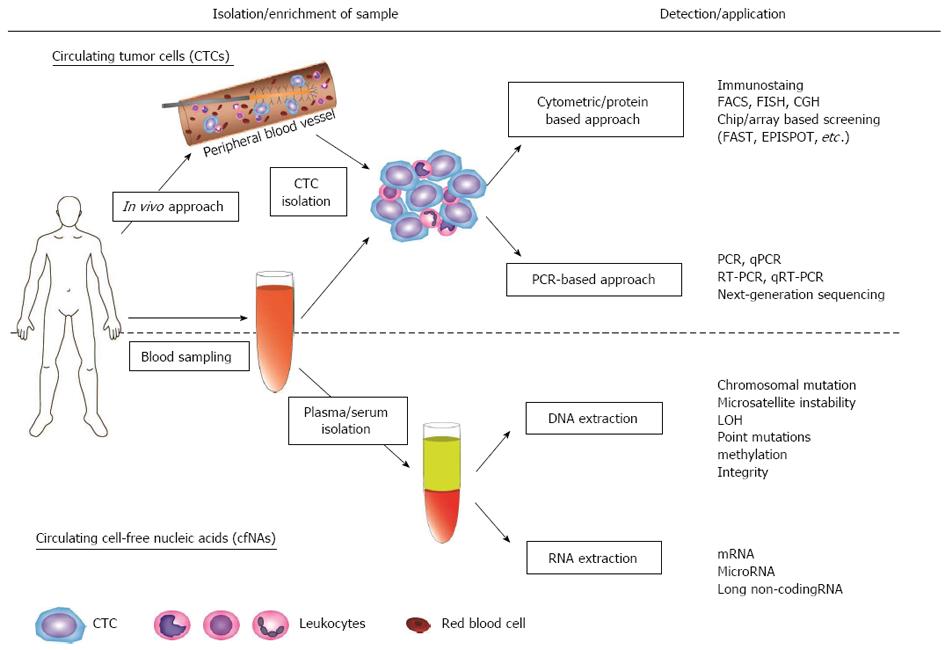Copyright
©2014 Baishideng Publishing Group Co.
World J Gastroenterol. Mar 28, 2014; 20(12): 3265-3286
Published online Mar 28, 2014. doi: 10.3748/wjg.v20.i12.3265
Published online Mar 28, 2014. doi: 10.3748/wjg.v20.i12.3265
Figure 1 Flow chart of current and potential applications of circulating tumor cell and circulating cell-free nucleic acids technologies.
Circulating tumor cells (CTCs): The blood samples from cancer patients are processed through various isolation/enrichment and detection techniques. A new in vivo approach allows the enrichment of CTCs directly from a peripheral vein of patients, using a wire functionalized by attachment of epithelial cell adhesion antibodies[32]. CTCs are usually captured along with contaminating leukocytes. Various detection methods are utilized to detect the rare cell population in the bloodstream. Circulating cell-free nucleic acids (cfNAs): Plasma/serum are generally isolated with centrifuge techniques and subsequently processed for the extraction of specific nucleic acids. Cancer-specific alterations are most commonly analyzed in circulating DNA. Circulating miRNA has attracted increasing attention because of its stability in plasma/serum. Most recently, long non-coding RNA in plasma was also evaluated as a potent biomarker in gastric cancer patients. CGH: Comparative genome hybridization; FACS: Fluorescence activated cell sorter; FISH: Fluorescence in situ hybridization; FAST: Fiberoptic array scanning technology; EPISPOT: Epithelial immunospot; qRT-PCR: Quantitative real-time polymerase chain reaction; LOH: Loss of heterozygosity.
- Citation: Tsujiura M, Ichikawa D, Konishi H, Komatsu S, Shiozaki A, Otsuji E. Liquid biopsy of gastric cancer patients: Circulating tumor cells and cell-free nucleic acids. World J Gastroenterol 2014; 20(12): 3265-3286
- URL: https://www.wjgnet.com/1007-9327/full/v20/i12/3265.htm
- DOI: https://dx.doi.org/10.3748/wjg.v20.i12.3265









